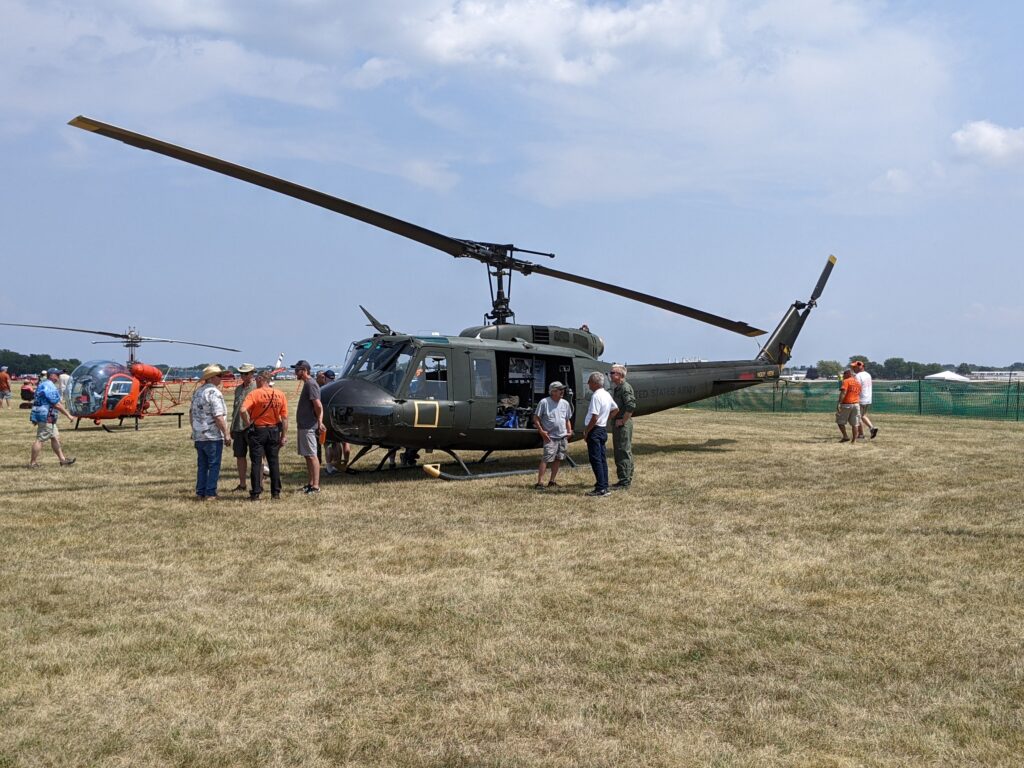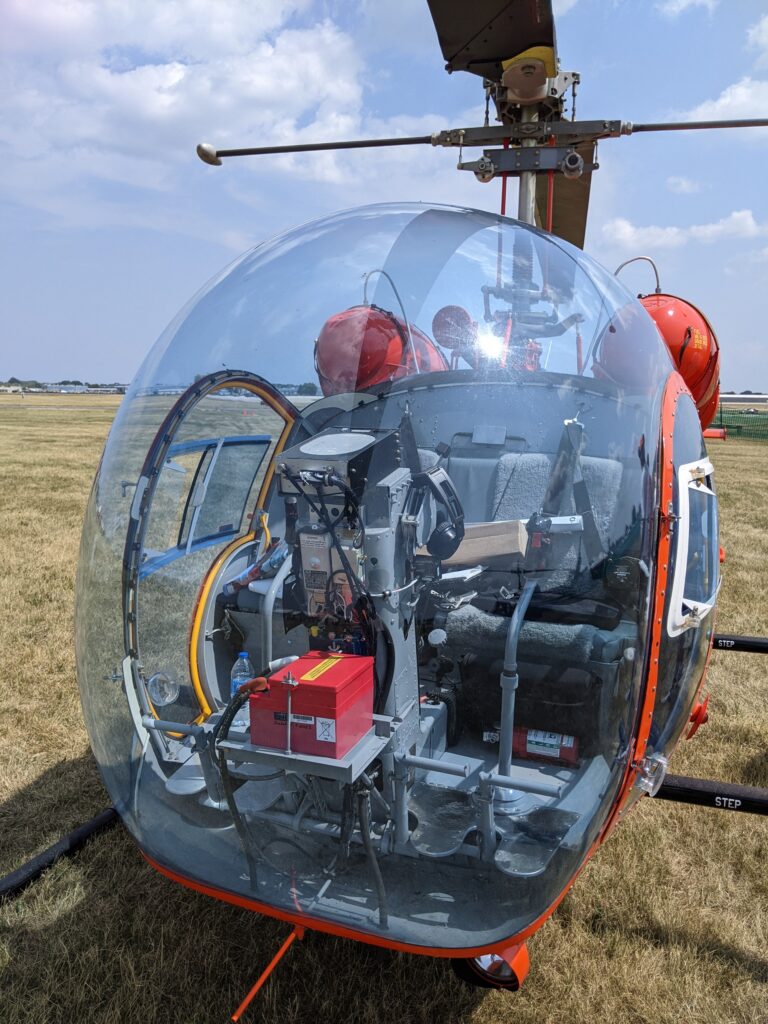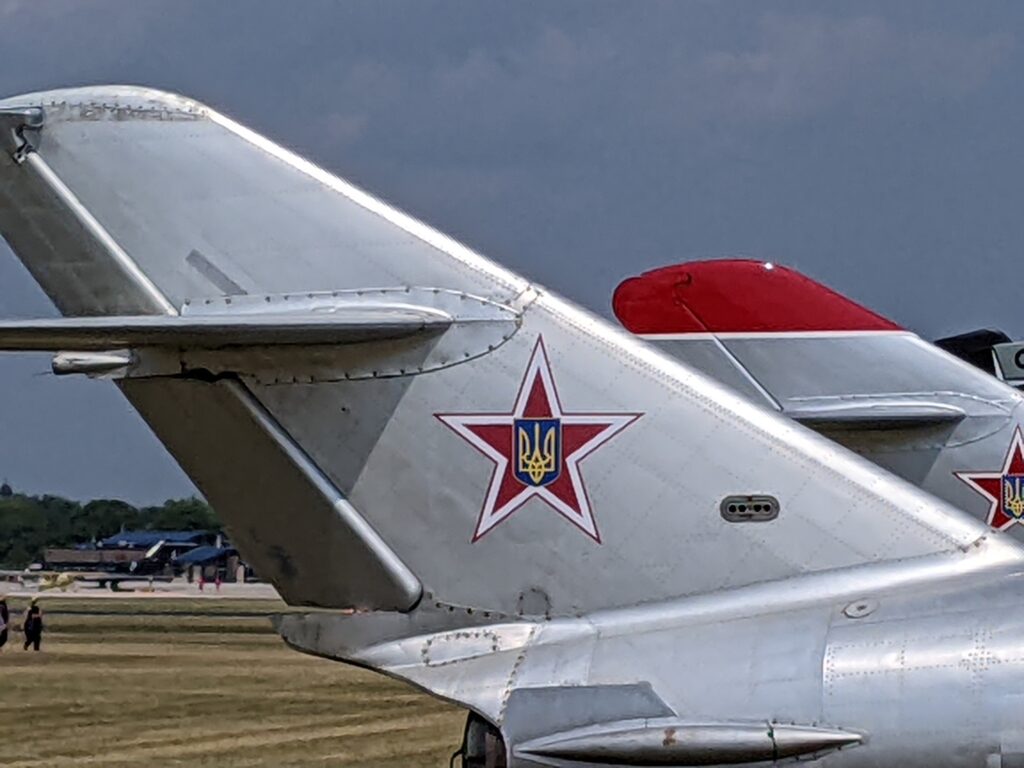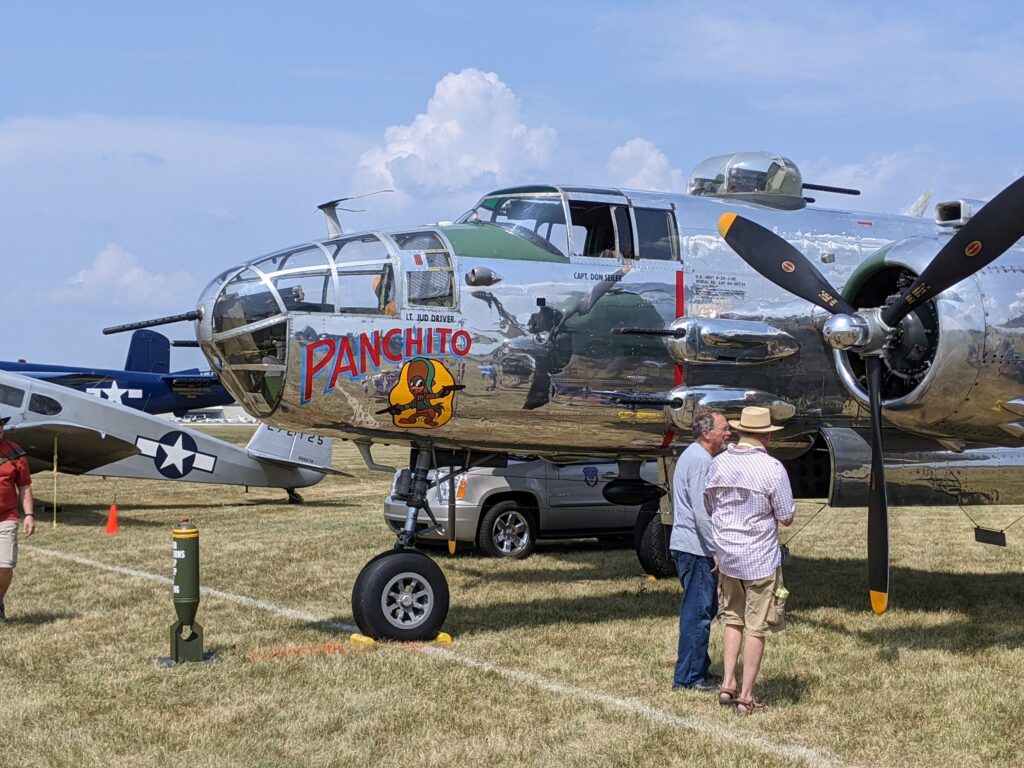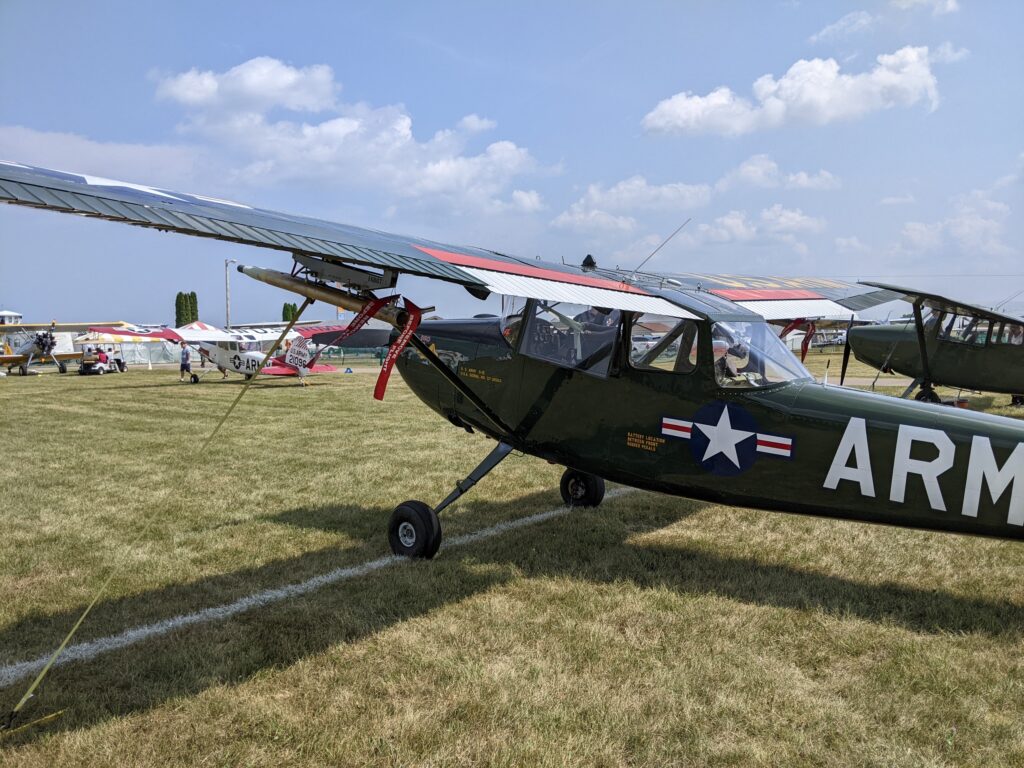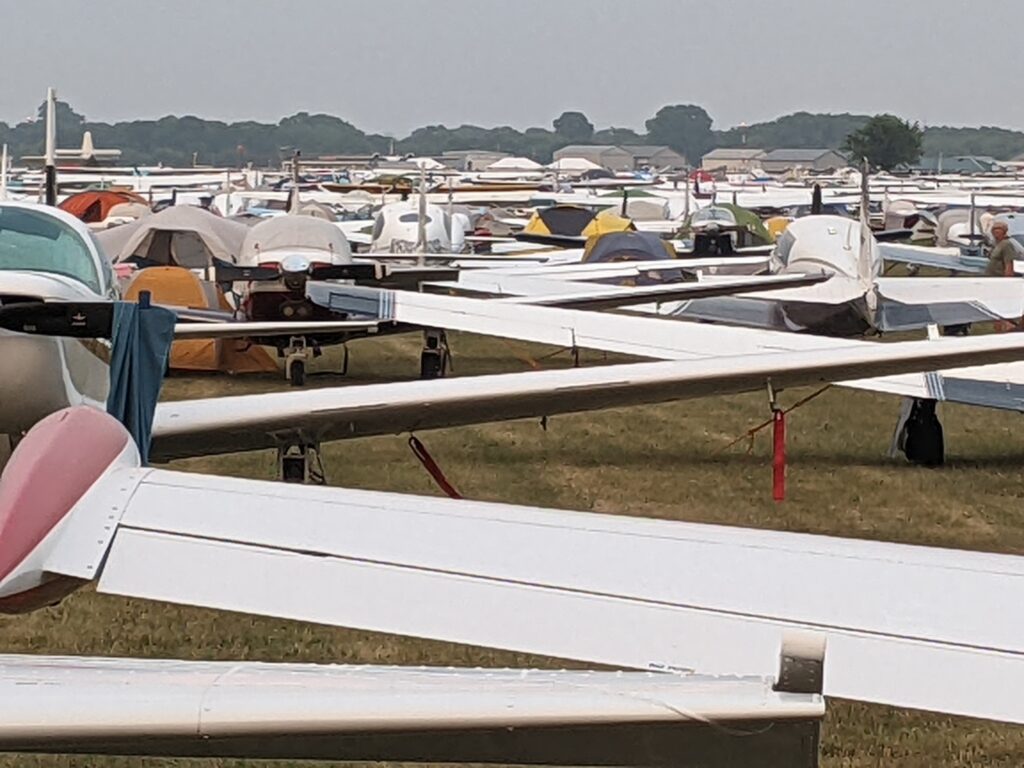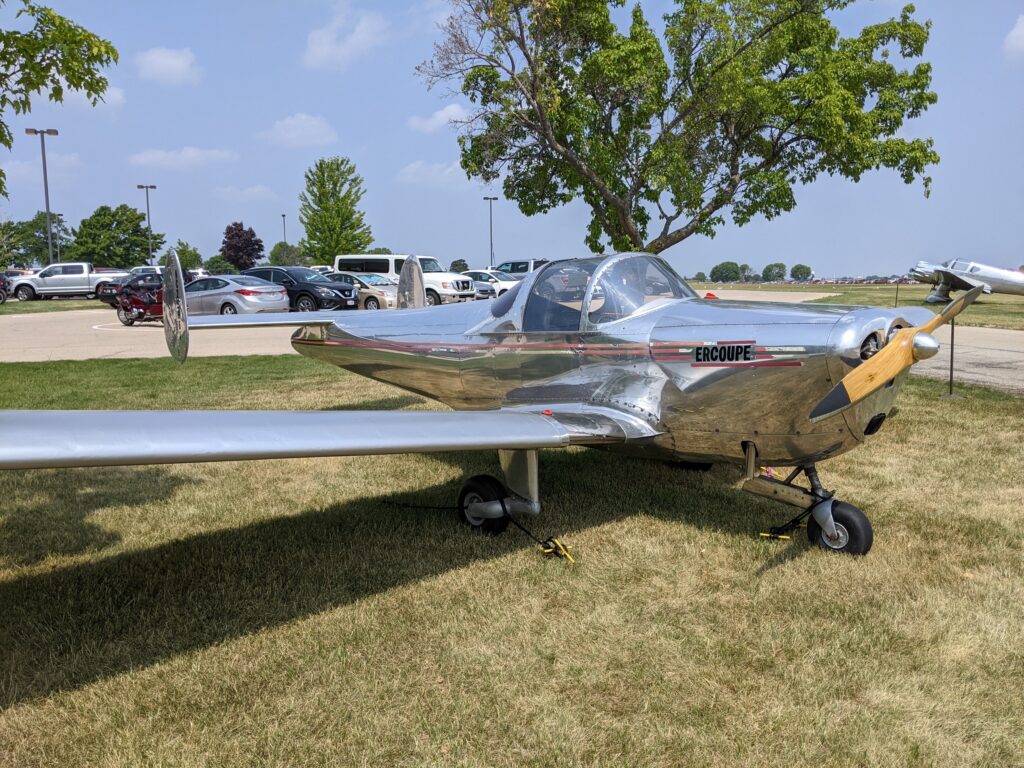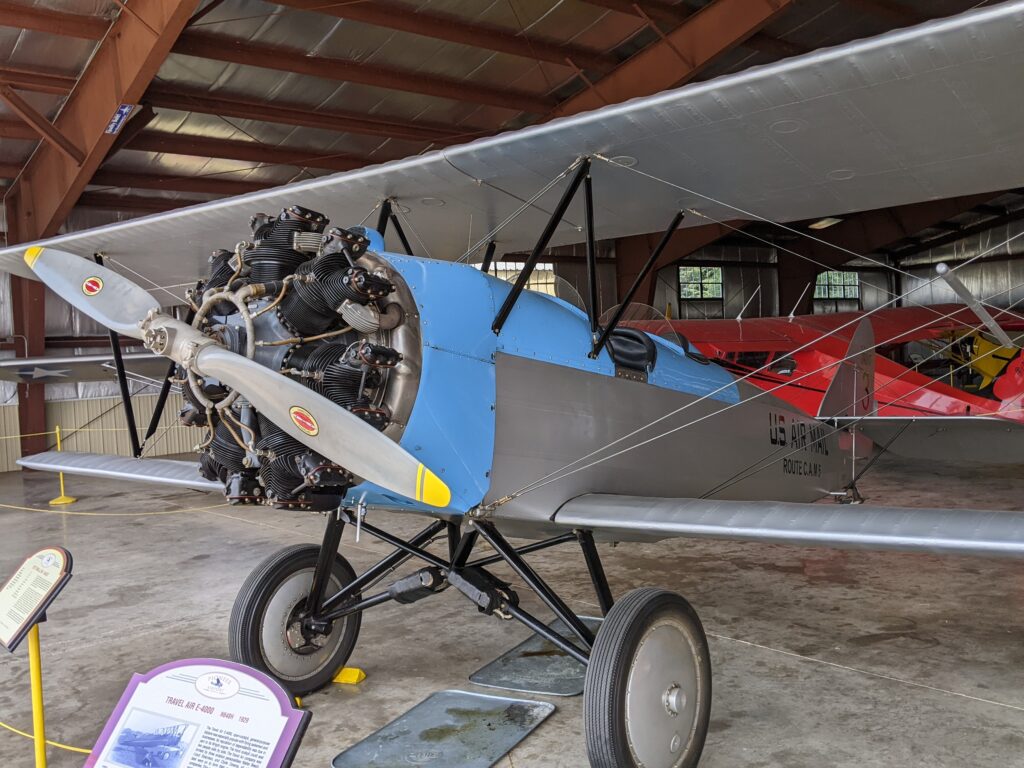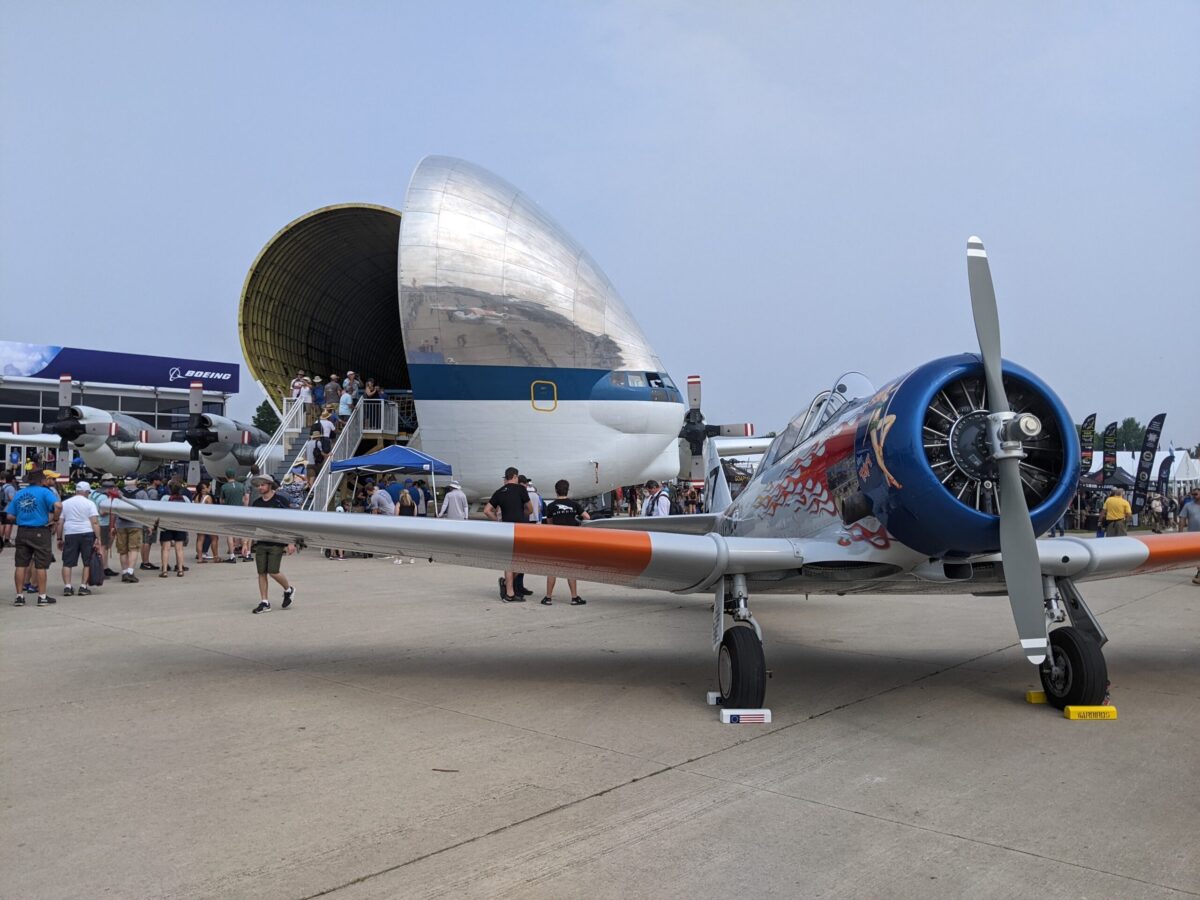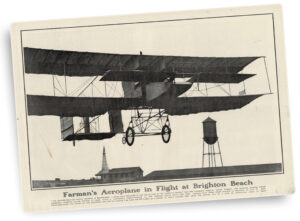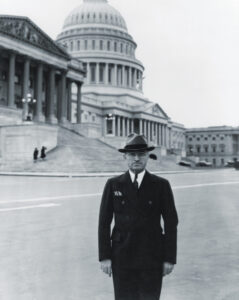Aviation comes with some inherent risks and that can lead to tragedy. Such was the case at the Experimental Aircraft Association’s 2023 AirVenture, the annual show that takes place at Wittman Regional Airport in Oshkosh, Wisconsin. Over the course of the week-long event on July 24-30, four people lost their lives. Two died when their North American T-6 Texan, a World War II-era training aircraft, crashed into a nearby lake. They were identified as Devyn Reiley, 30, and Zach Colliemoreno, 20. Two other attendees perished in a crash between a RotorWay 162F helicopter and an ELA 10 Eclipse gyrocopter. Thomas Volz, 72, and Mark Peterson, 68, died in the crash and two others were injured. Both accidents took place on July 29.
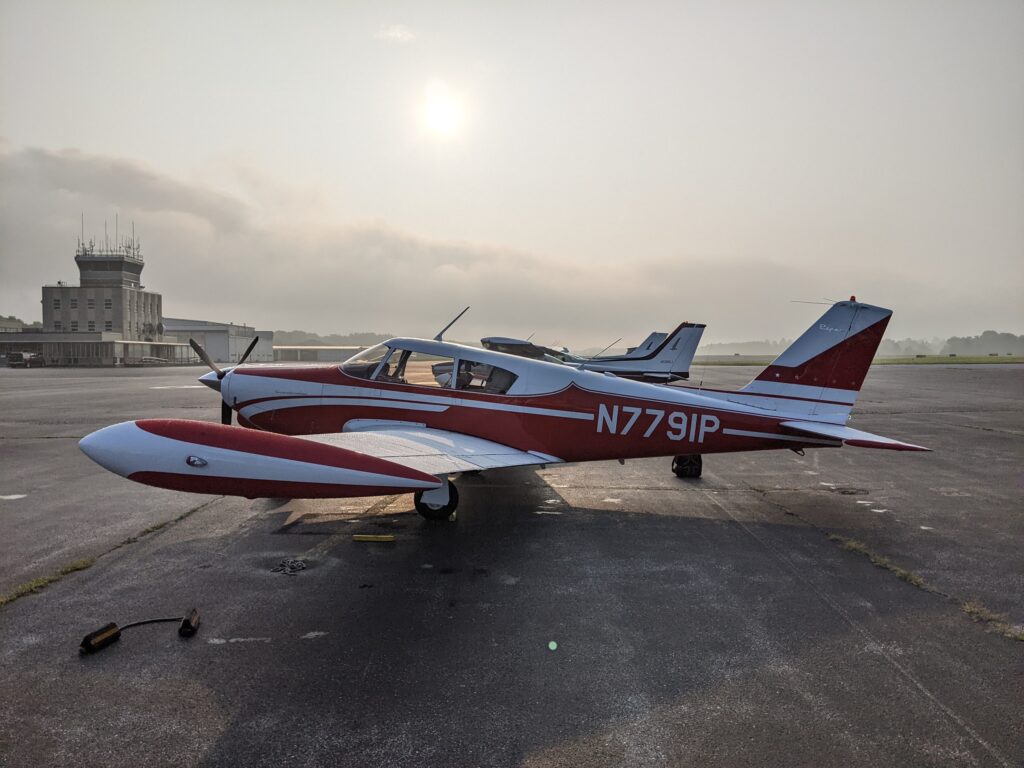
I attended the show but had departed by the day of the accidents. As I did last year, I flew out from central Pennsylvania as a passenger in a 1962 Piper Comanche owned and flown by Tom LeCompte, a friend, pilot, aviation enthusiast, and writer (Tom’s account of the airplane accident that killed singer Patsy Cline appeared in the Autumn 2022 issue of Aviation History.)
We did things a little differently this year by making an overnight stop in Dayton, Ohio, to visit the National Museum of the U.S Air Force. Talk about a lot of airplanes! The museum is huge and contains multitudes. I was most impressed by the B-36 Peacemaker and the XB-70 Valkyrie, both gigantic airplanes that pushed the bounds of aviation technology in their time. I also took so many photos and videos in the World War II gallery that I nearly drained the battery on my phone. I ended up having to borrow Tom’s so I could take more photos. Even after spending five hours at the museum, we didn’t see everything. I guess I will have to go back.
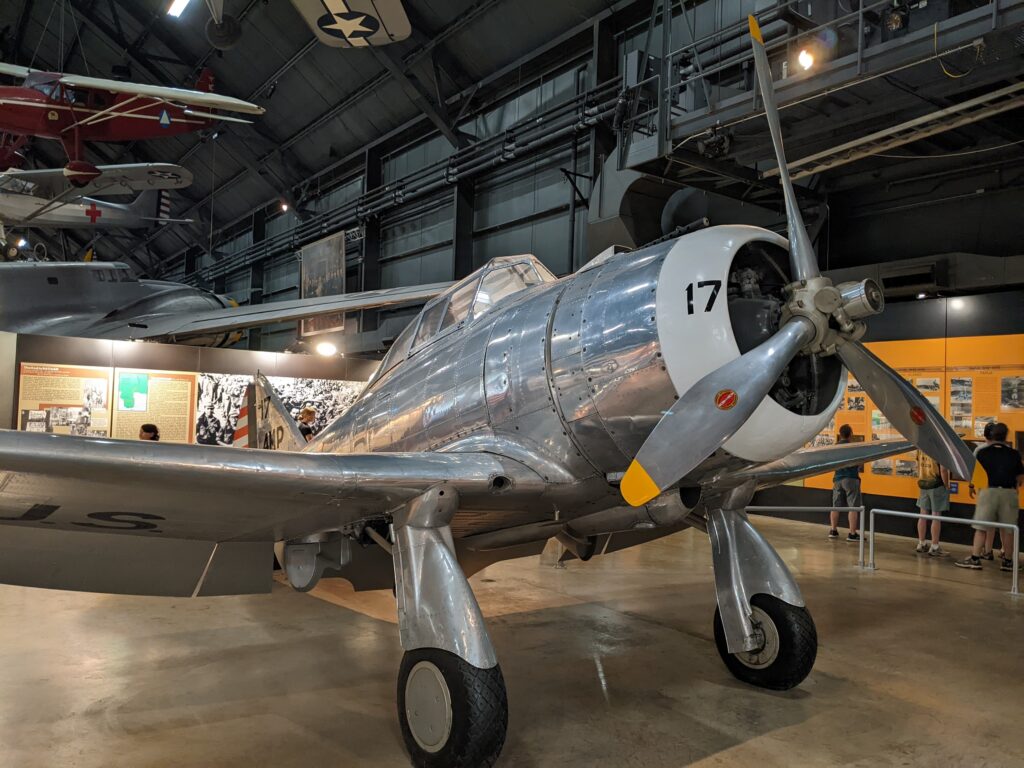
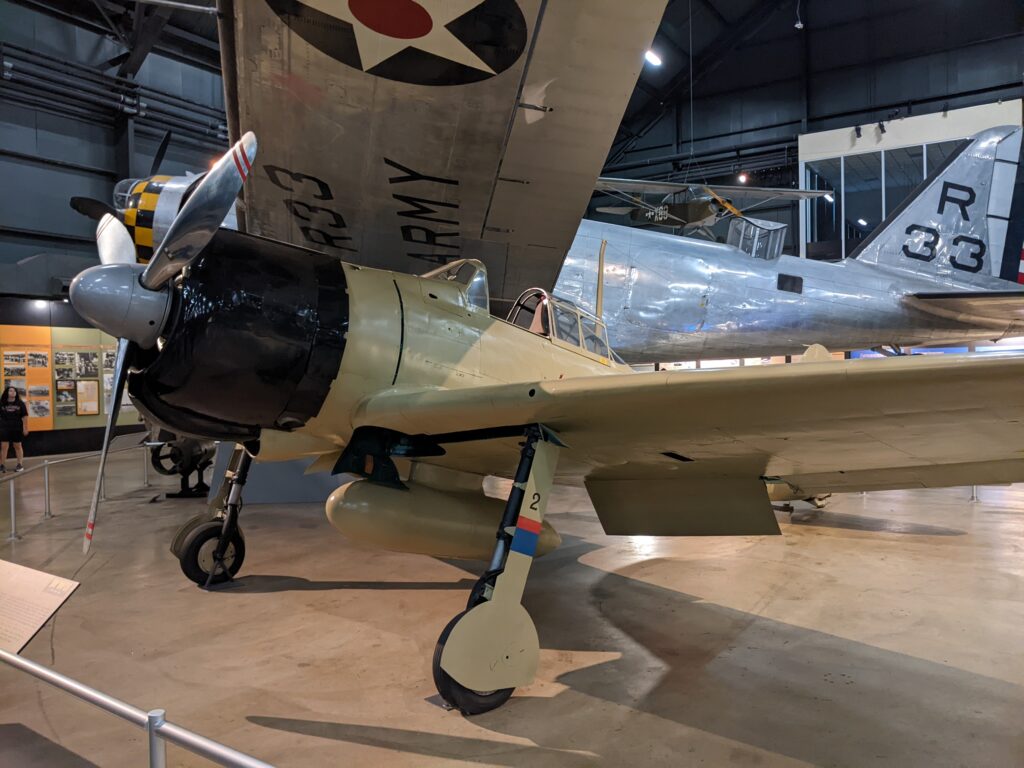
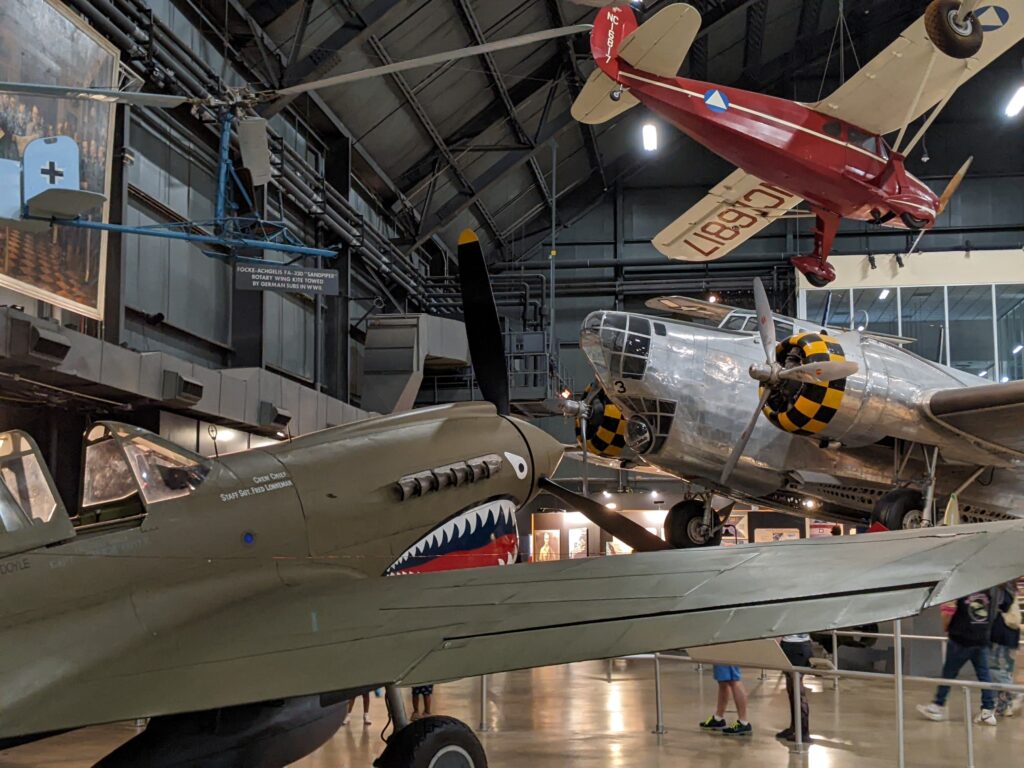
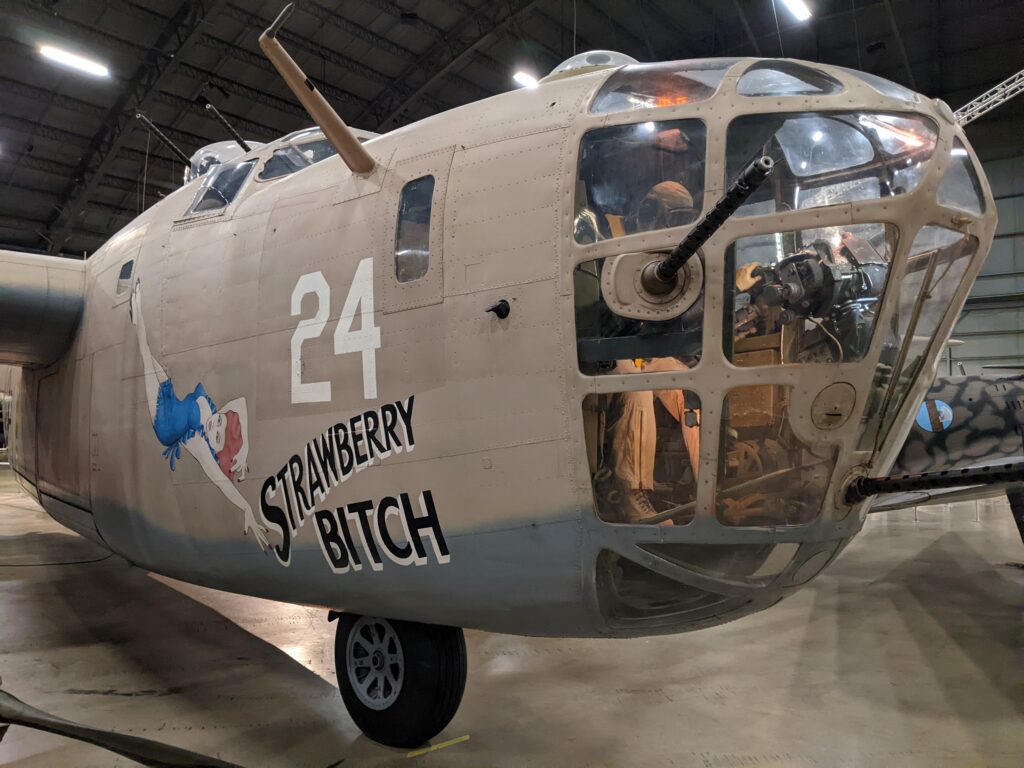
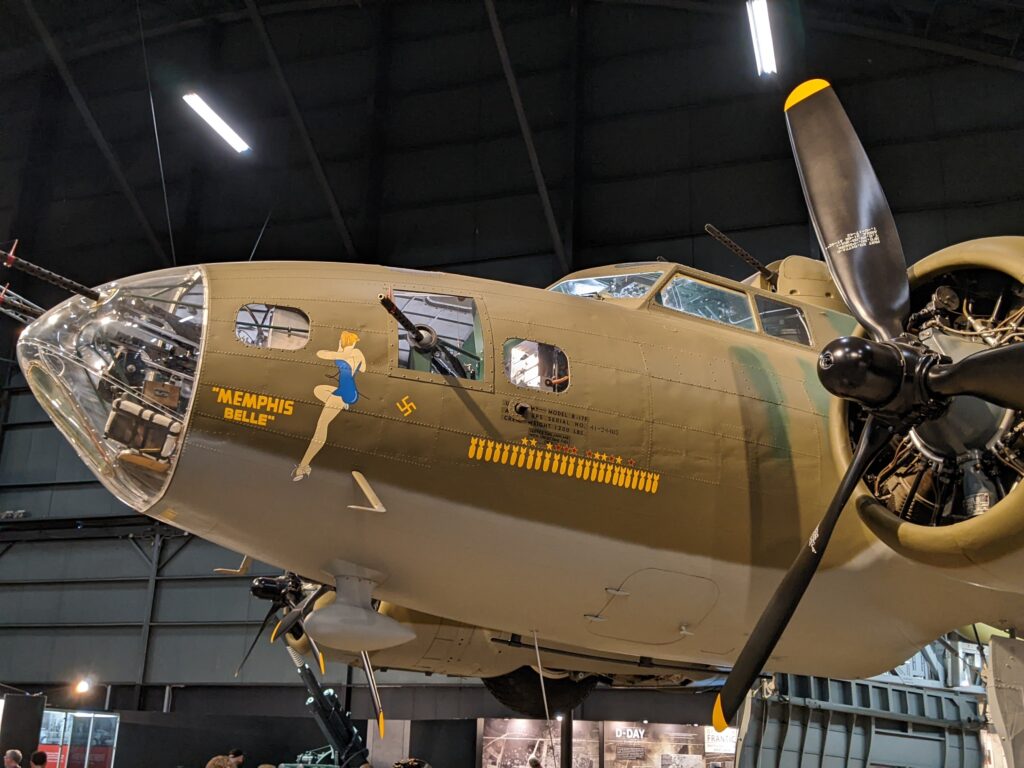
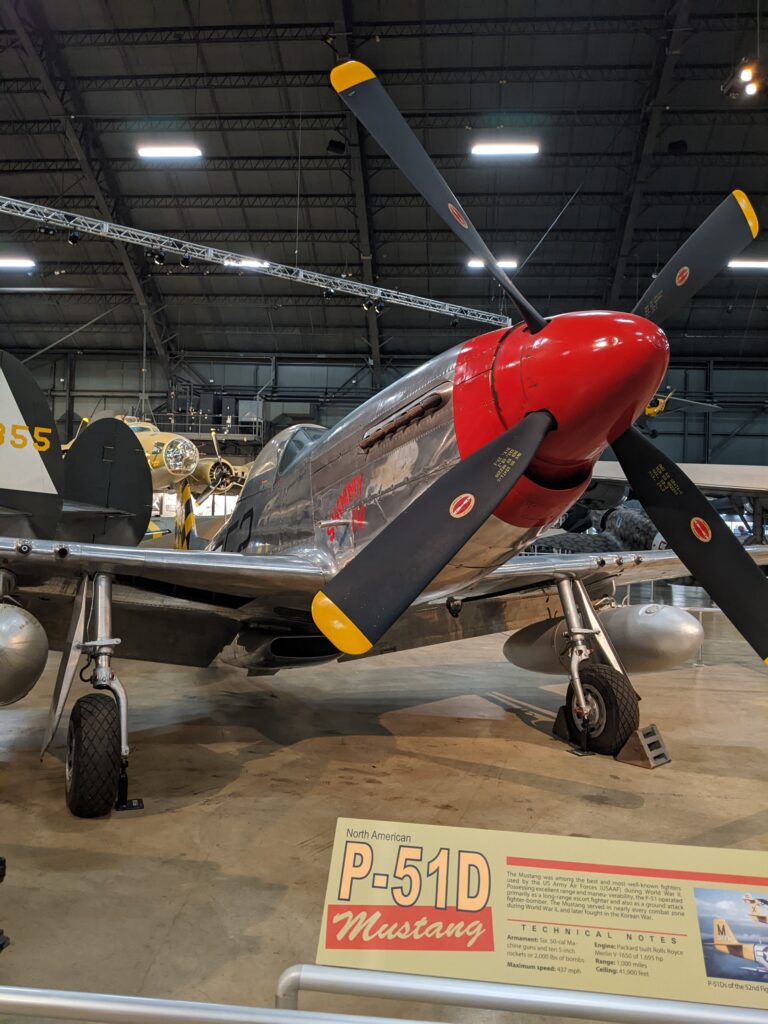
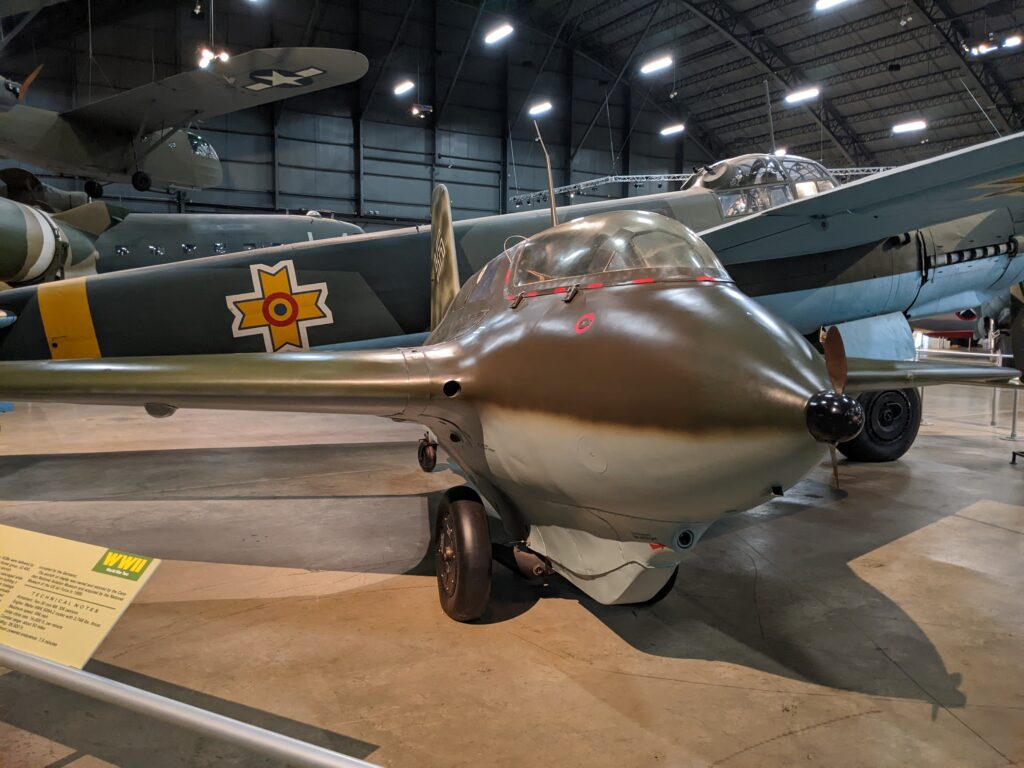
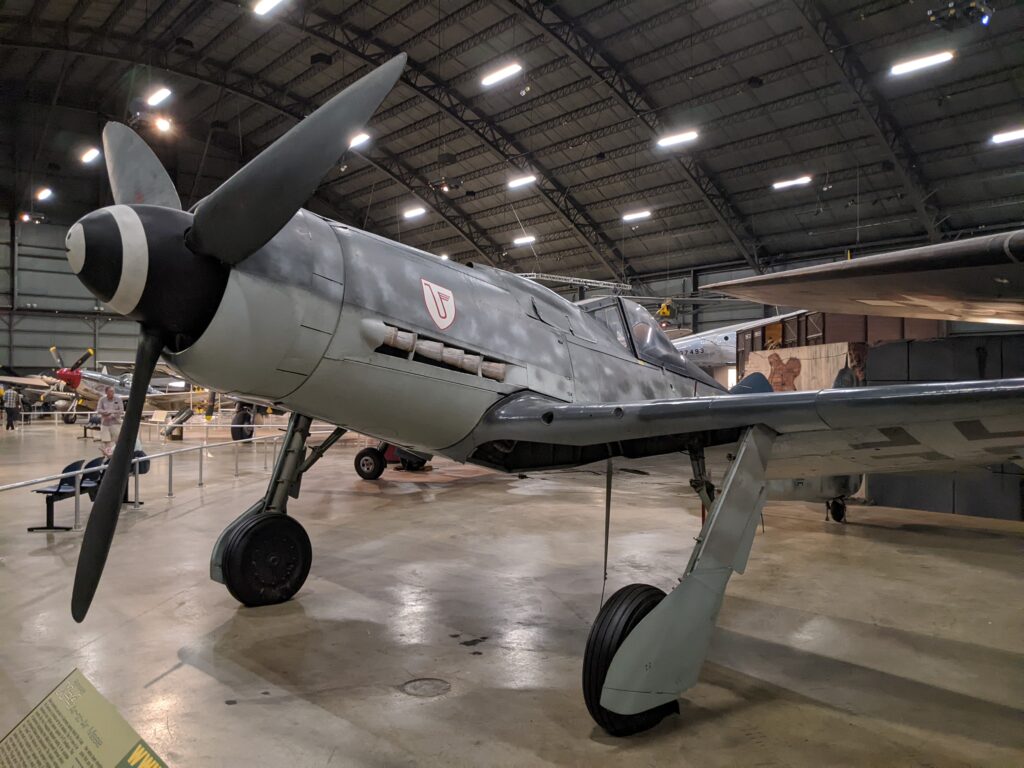
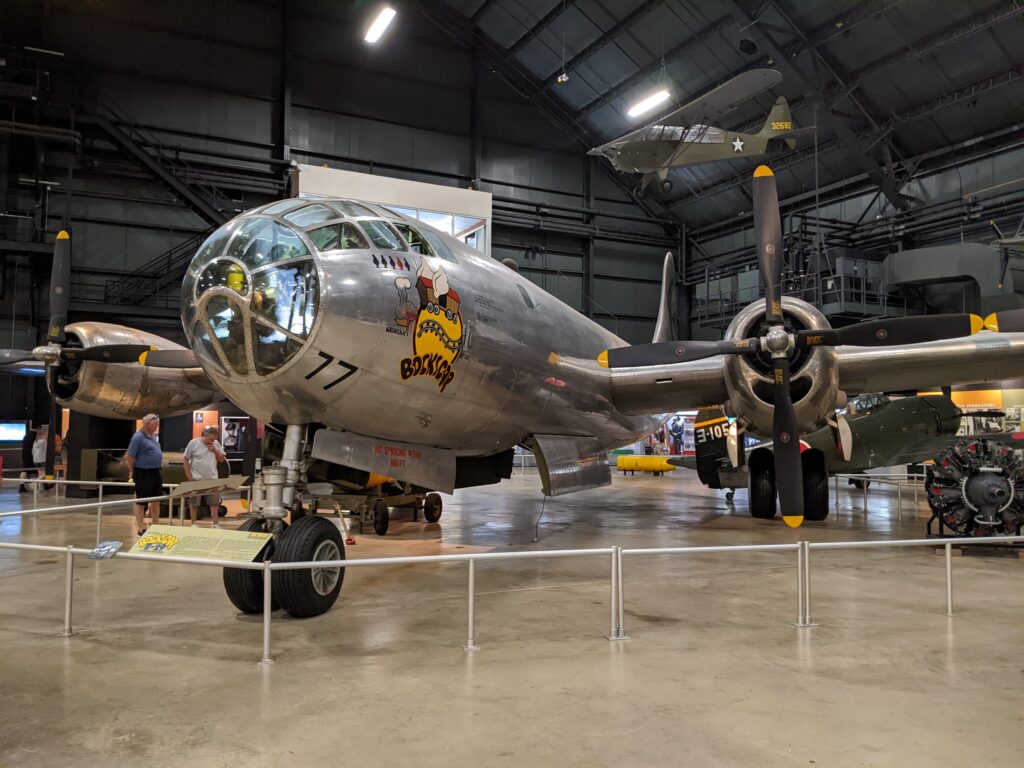
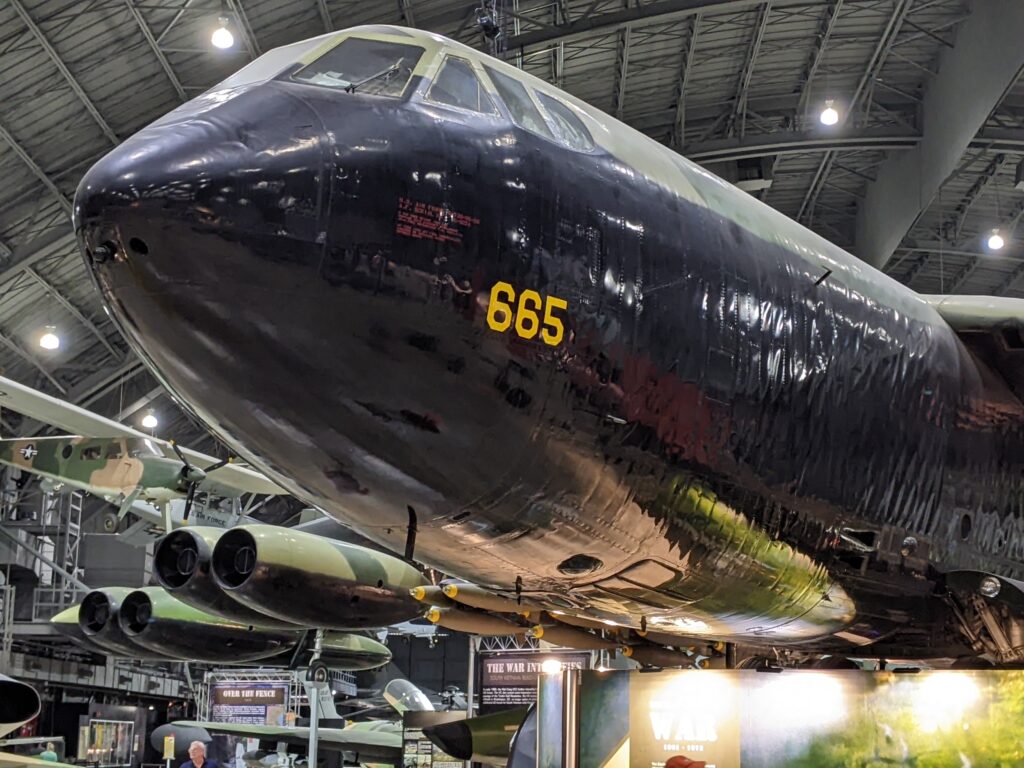
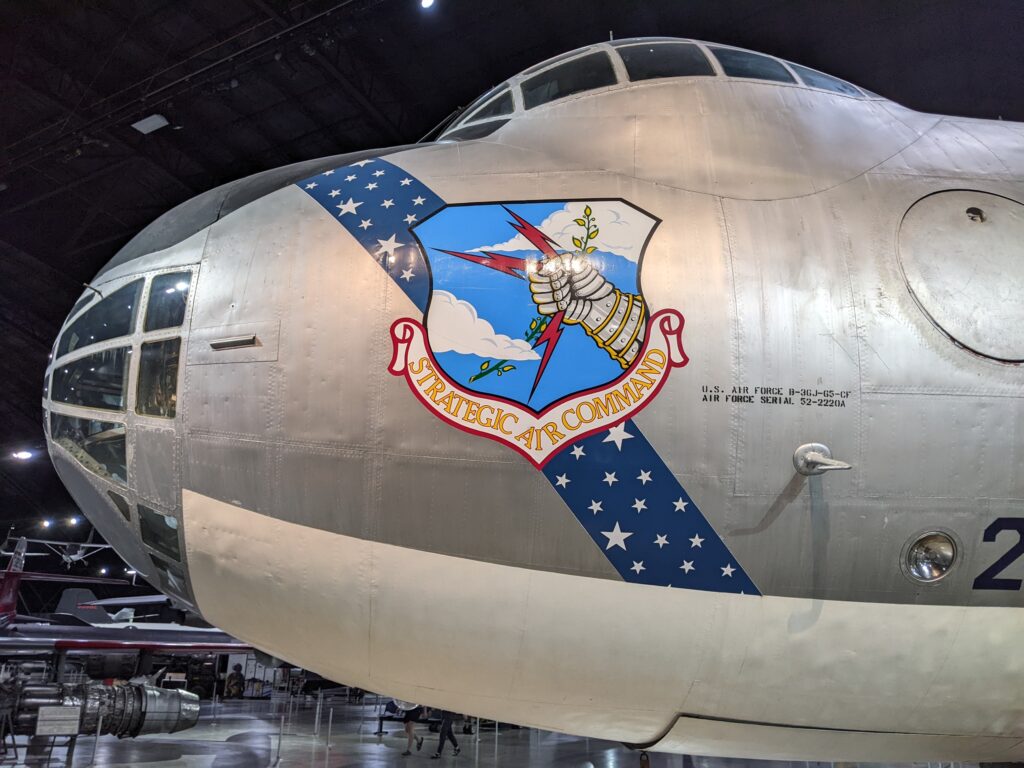
The next stop was in Madison, Wisconsin, where Tom had plans to link up with a group of Mooney pilots to take part in a mass fly-in to Oshkosh. There were 54 planes—51 of them Mooneys, two of them Pipers, and one RV. So, we were definitely one of the odd planes out, but the Mooneys welcomed us aboard anyway.
There was a briefing session the night before the flight. As a right-seater, my job was essentially to keep quiet and not distract the pilot, a task I was reasonably certain I could handle. Then the pilots went over everything they needed to know, including the schedule, takeoff and landing procedures, radio frequencies and so forth. The planes would all take off and fly in elements of three—Tom and I were the #3 airplane in the Romeo element—and there was also a lead and a tail pilot. After the briefing, all the pilots went out the parking lot to do the “dirt dance,” in which they all walked through the flight so they knew exactly what to do.
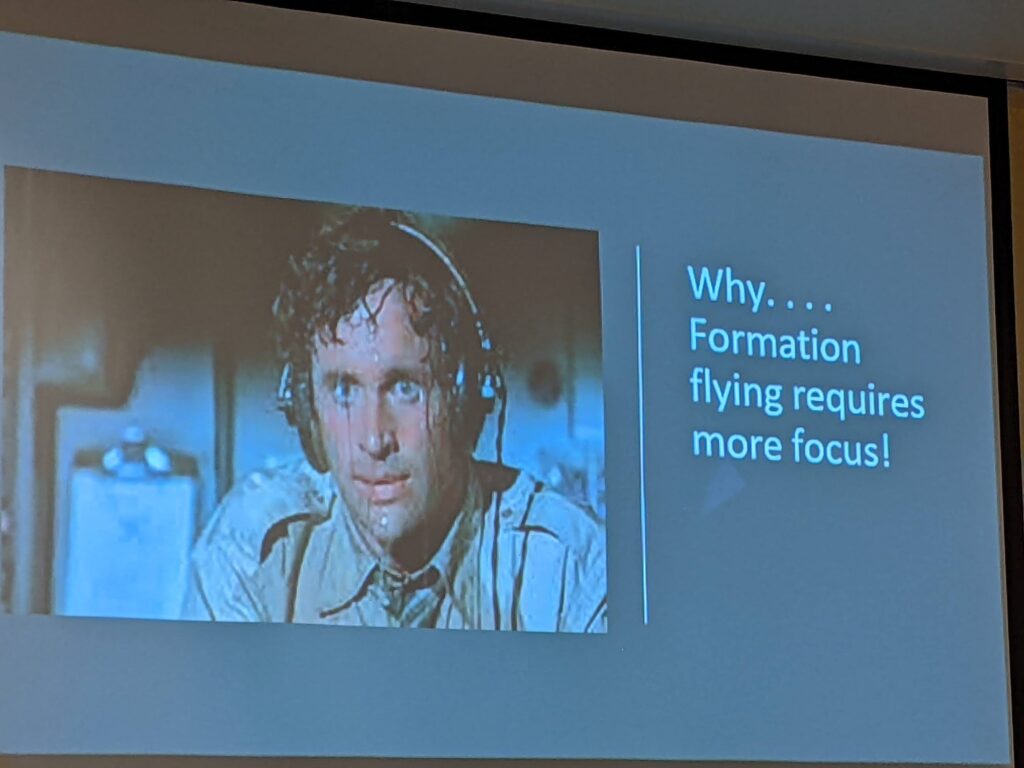
It was quite a sight the next morning to watch all those airplanes taxi out and line up on the runway in Madison, and something else altogether as the elements took off one by one and soared above the Wisconsin state capitol and on to Oshkosh. The fight was only about 35 minutes or so and I kept myself busy taking photos and videos. Sometimes prop wash created a little turbulence, which increased my already high levels of adrenaline. Tom kept focused on Romeo 1 in front of us; Romeo 2 in our rear was similarly focused on our Piper. The two Romeos seemed so close I felt like I could throw a rock and hit them (which, naturally, I did not attempt). It gave me a new respect for the World War II pilots who did this kind of thing on a regular basis—while other pilots were trying to kill them. Fortunately, we encountered no hostiles on our flight, and we all landed safely, with our wheels hitting the runway at the same moment as Romeo 1’s did, exactly as we were supposed to.
And then we were at Oshkosh. There are two things you can expect if you attend the AirVenture. First, you’ll see lots of airplanes. Second, you’re likely to experience some thunderstorms. The first thunderstorm hit that evening but left us unscathed, although the wind had my tent performing some interesting gyrations.
II spent the next few days watching the historic aircraft that had gathered for the event. There was a lot to see! I’d look up and see the Boeing B-29 Superfortress Doc or the B-17 Flying Fortress Aluminum Overcast fly over. I watched a long-winged Lockheed U-2 do a flyby low over the runway at Wittman field. In the afternoons aerobatic airplanes twisted, twirled and spewed smoke during the airshows. The sounds of jets and propellers filled the air at all times. The really big airplanes—including a Super Guppy and a C-117—occupied the expanse of Boeing Plaza. Nearby was the newly restored P-51C Thunderbird, which had once been owned by actor James Stewart and record-setting pilot Jackie Cochran. Vintage aircraft had their own section, as did warbirds from World War II and other conflicts. An aviation village sprang up in the fields around the airport as thousands of private airplane owners set up camp next to their craft.
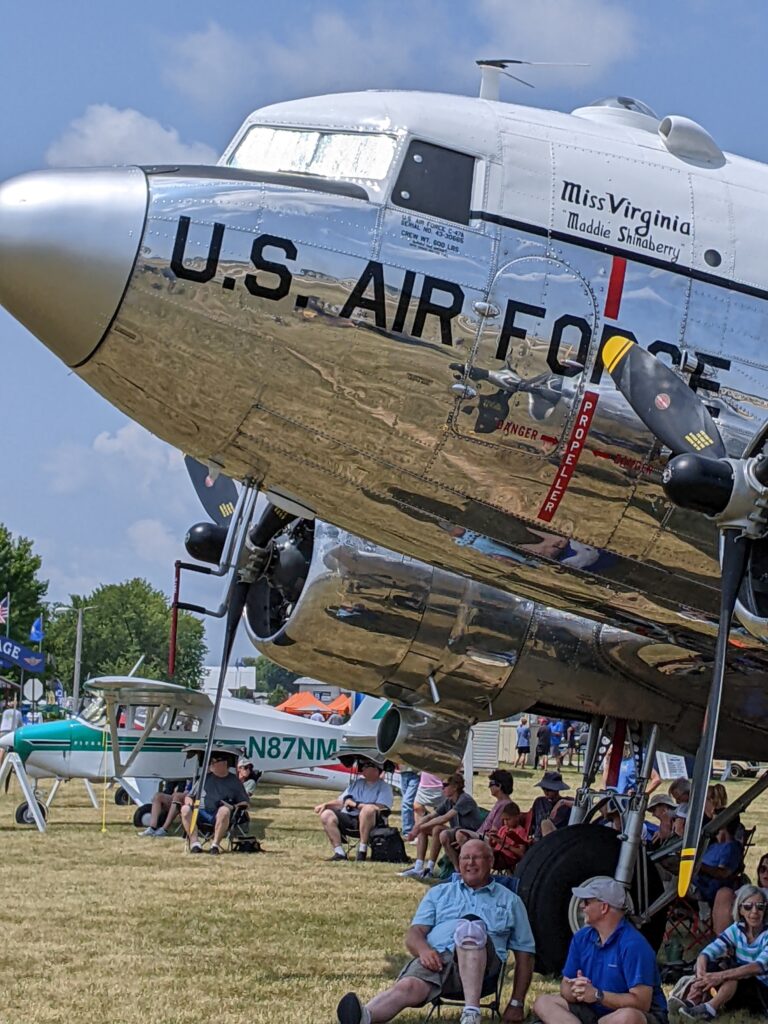
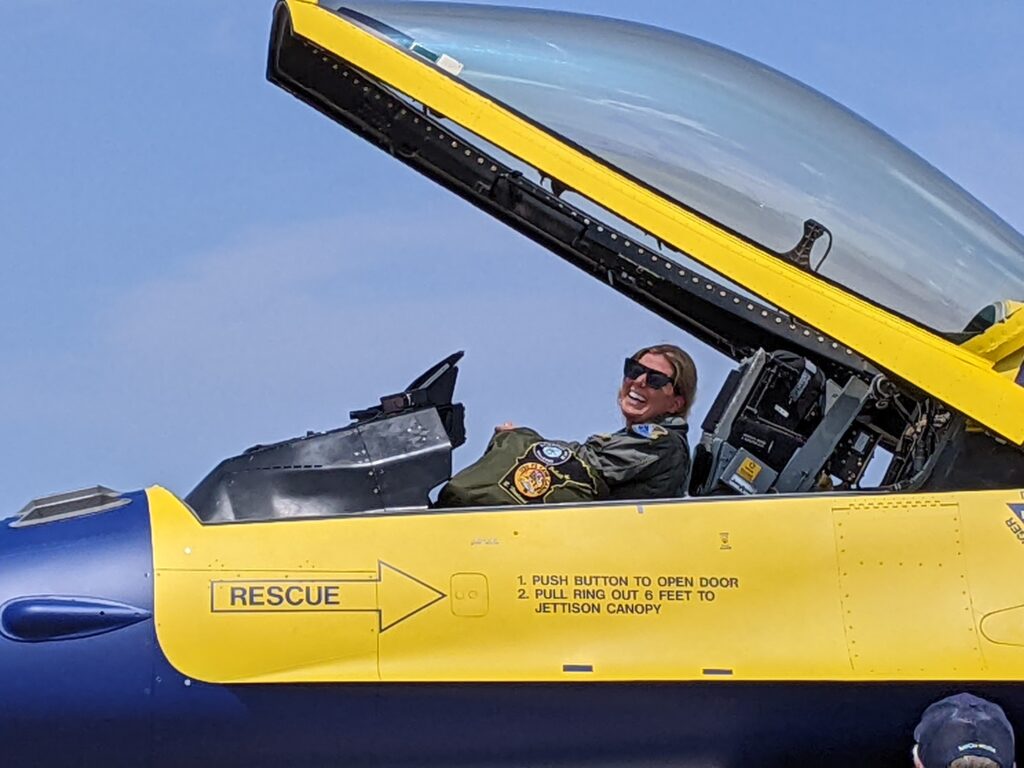
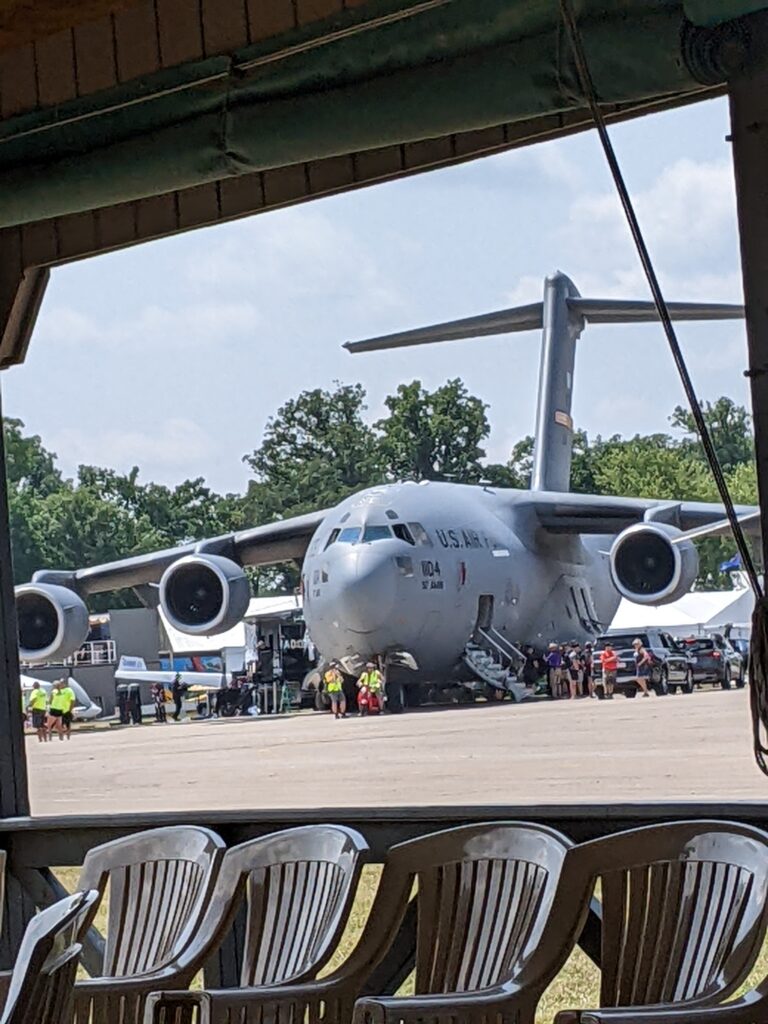
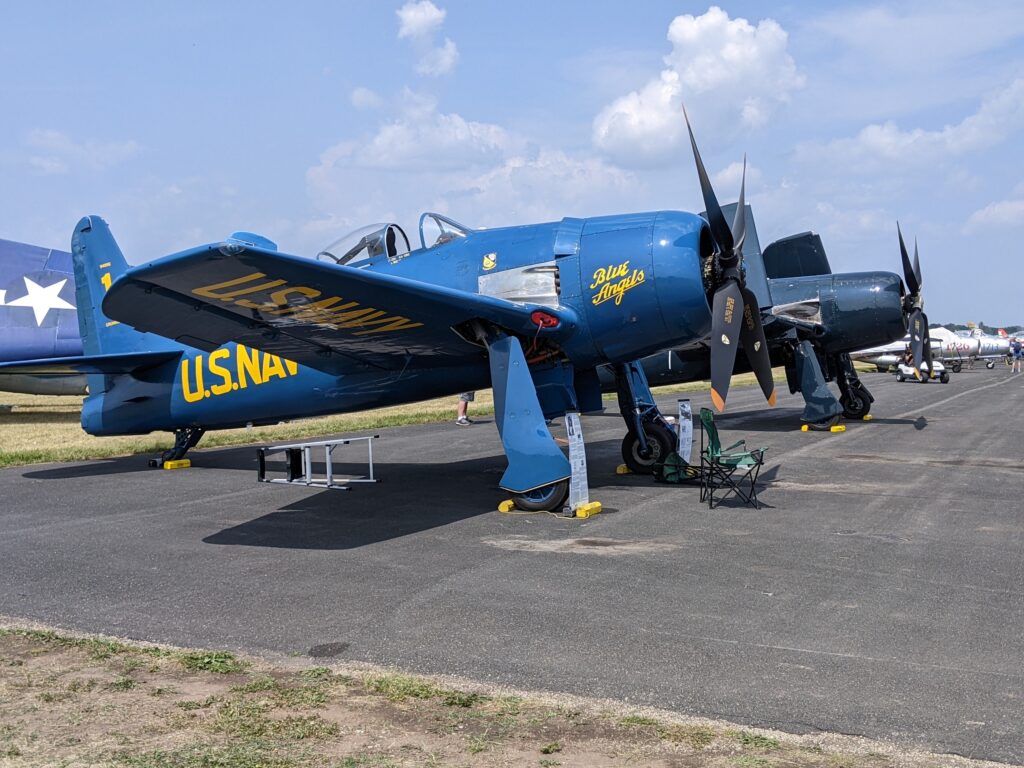
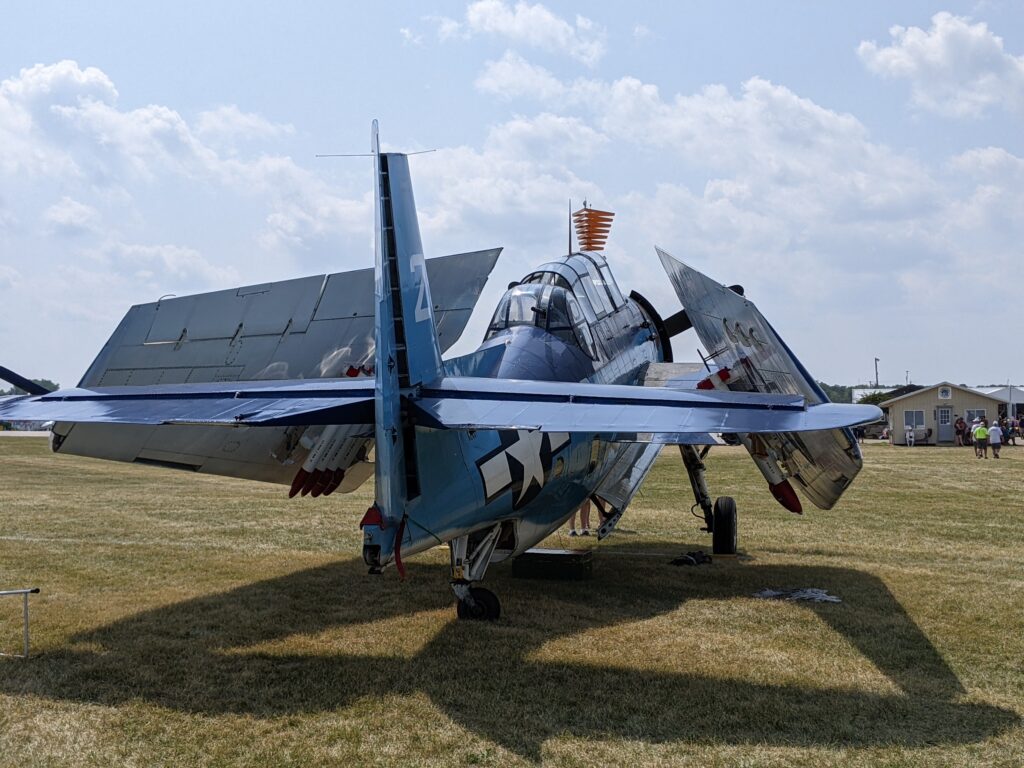
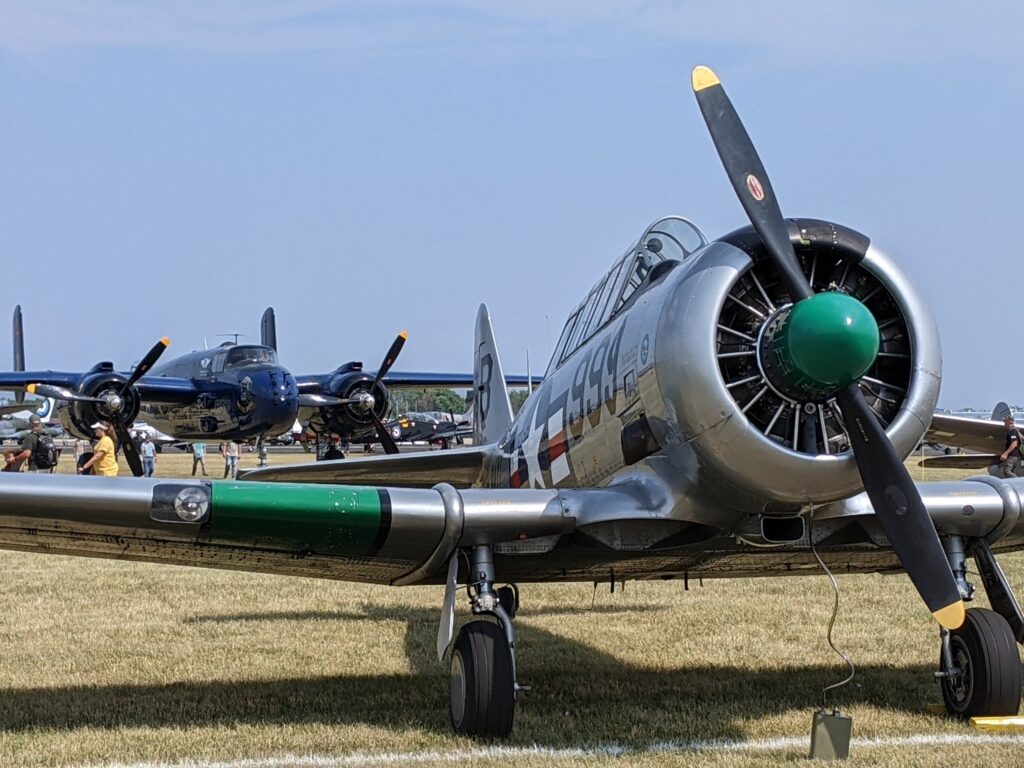
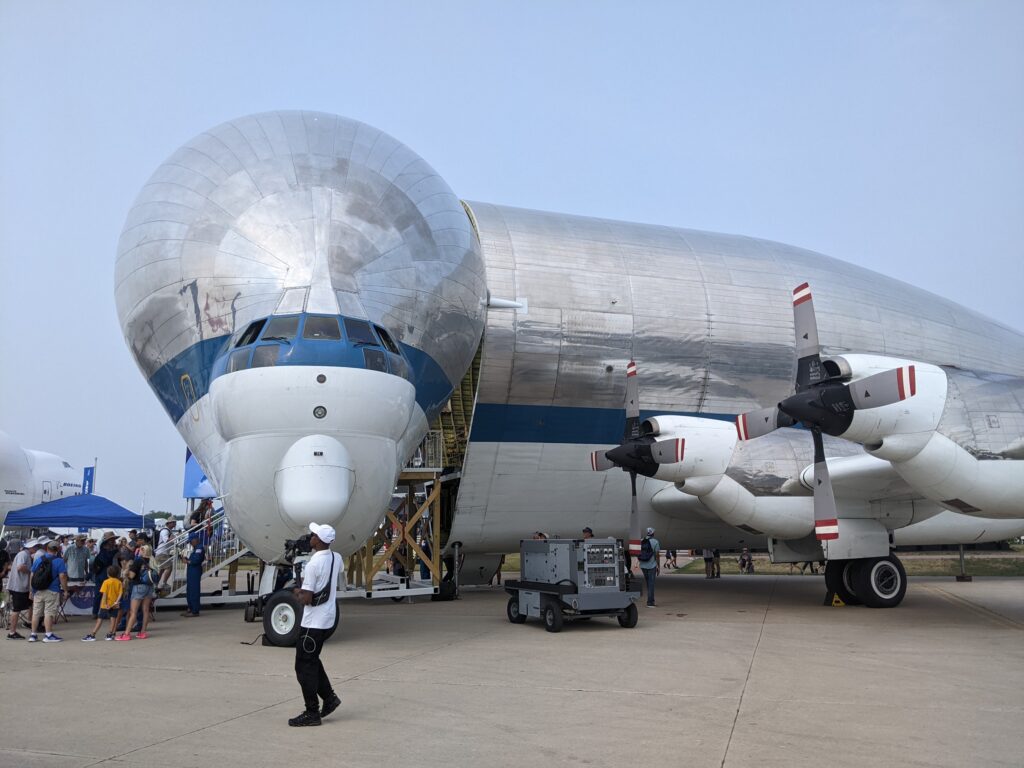
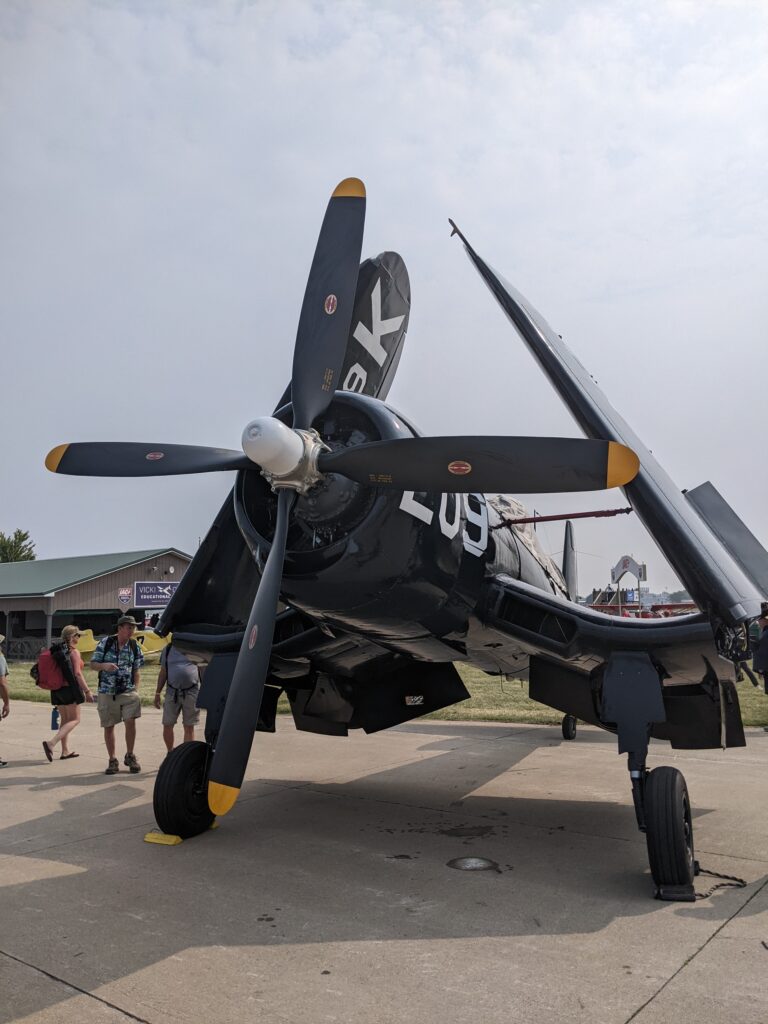
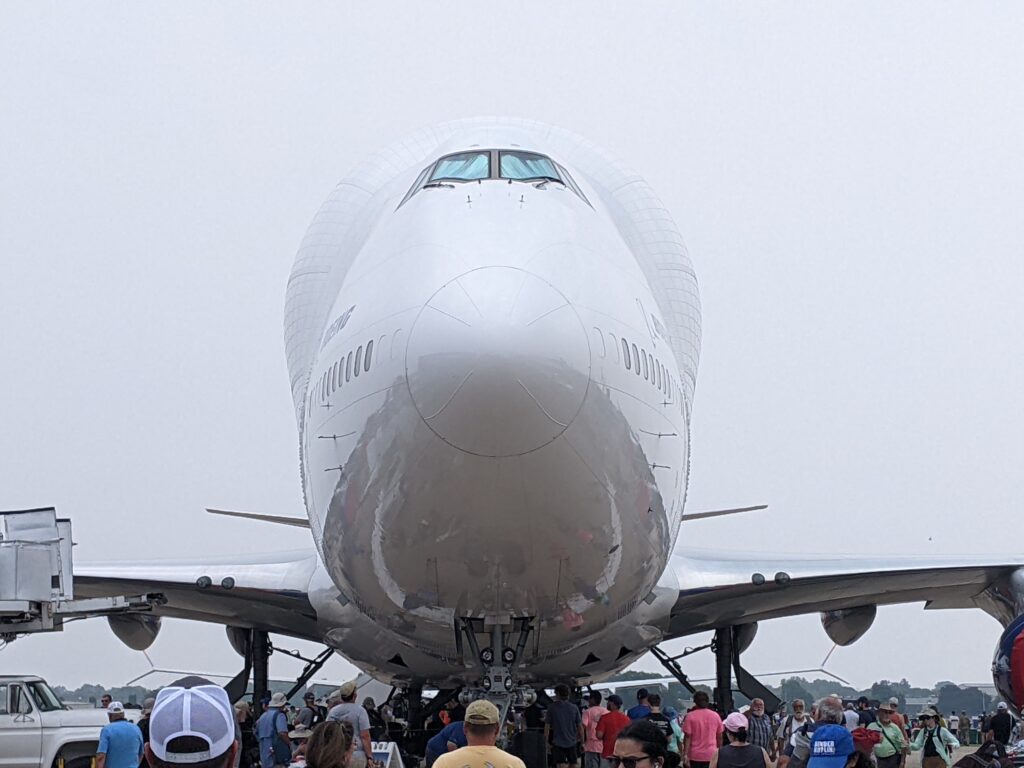
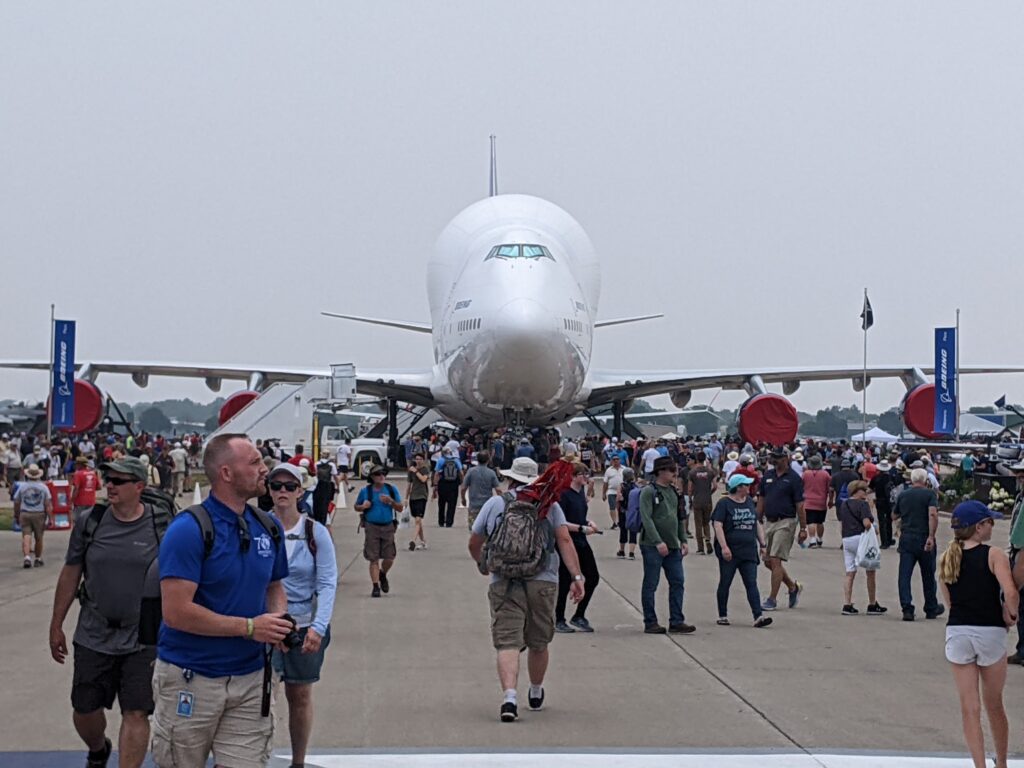
And that’s just the tip of the iceberg. There were also talks and demonstrations and hundreds of vendors offering anything connected with aviation, from airplane tech to baby clothes. The EAA Aviation Museum is nearby, too, and I spent some time there looking at their collections. Later in the day we could sit in front of our tents and watch as everything from an F-22 to a flight of Texans soared by. There’s really nothing like it. The EAA estimates the show had a record attendance of 677,000 people. More than 10,000 airplanes flew into Wittman and surrounding airports. There were 3,365 showplanes at the event, which the EAA broke down as 1,497 vintage aircraft, 1,067 homebuilts, 380 warbirds, 194 ultralights, 134 seaplanes and amphibians, 52 aerobatic airplanes and 41 rotorcraft. Some 40,000 people camped out in the facility’s 13,000 campsite. Those are all big numbers.
Tom and I set out for home on Wednesday morning, but not until we had to wait out another thunderstorm that turned the sky an ominous gray and pelted Oshkosh with driving rain. We were packed and ready to go but had to wait out the storm in the Mooney group’s big tent. Stray lightning bolts were still snapping to the ground off in the distance as we lifted off from Wittman and made our way around the perimeter of the storm before crossing Lake Michigan and continuing the journey east. The show we left behind was still untainted by the tragedies to come on Saturday.
Here are a few more photos from the show.
